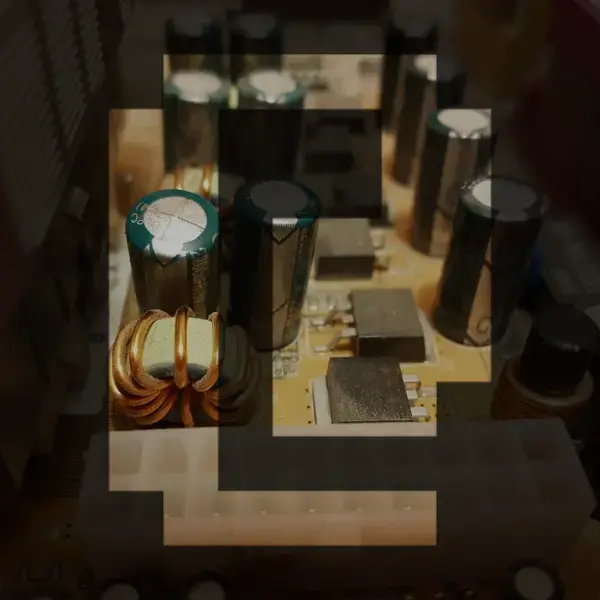So I’ve been trying to install the proprietary Nvidia drivers on my homelab so I can get my fine ass art generated using Automatic1111 & Stable diffusion. I installed the Nvidia 510 server drivers, everything seems fine, then when I reboot, nothing. WTF Nvidia, why you gotta break X? Why is x even needed on a server driver. What’s your problem Nvidia!
Nvidia doesn’t hate linux, it just don’t care and the linux community hates nvidia
amd didn’t care a few years ago, but their drivers are open, so the community can fix it even if the company don’t care(now amd care a lot more, so it’s better) nvidia is a closed source crap, and it don’t give a fuck too
I thought nvidis was opening their drivers some as of sometime last year. Still shit though.
It didnt open the parts of the driver that mattered
And they can’t get all those sweet sweet tracking data they get from Windows users
Linux is their bread and butter when it comes to servers and machine learning, but that’s a specialized environment and they don’t really care about general desktop use on arbitrary distros. They care about big businesses with big support contracts. Nobody’s running Wayland on their supercomputer clusters.
I cannot wait until architecture-agnostic ML libraries are dominant and I can kiss CUDA goodbye for good. I swear, 90% of my tech problems over the past 5 years have boiled down to “Nvidia sucks”. I’ve changed distros three times hoping it would make things easier, and it never really does; it just creates exciting new problems to play whack-a-mole with. I currently have Ubuntu LTS working, and I’m hoping I never need to breathe on it again.
That said, there’s honestly some grass-is-greener syndrome going on here, because you know what sucks almost as much as using Nvidia on Linux? Using Nvidia on Windows.
I cannot wait until architecture-agnostic ML libraries are dominant and I can kiss CUDA goodbye for good
I really hope this happens. After being on Nvidia for over a decade (960 for 5 years and similar midrange cards before that), I finally went AMD at the end of last year. Then of course AI burst onto the scene this year, and I’ve not yet managed to get stable diffusion running to the point it’s made me wonder if I might have made a bad choice.
It’s possible to run stable diffusion on amd cards, it’s just a bit more tedious and a lot slower. I managed to get it working on my rx 6700 under arch linux just fine. Now that I’m on fedora, it doesn’t really want to work for some reason, but I’m sure that it can be fixed as well, I just didn’t spend enough time on it.
Yeah they don’t hate Linux, they just have their own priorities. That said I’m running Nvidia+Wayland happily, for desktop they have worked a lot more on Wayland this year, the upcoming driver fixes a bunch of things, and my distrib handled driver installation and updates, I never have to think about it.
It just makes no sense to me though, how is it sustainable for nvidia to not have great Linux kernel support? Like, let the kernel maintainers do their job and reap the benefits. I’m guessing that nvidia sees enterprise support contracts as an essential revenue stream, but eventually even enterprises are going to go with hardware that Linus isn’t giving the finger to right? Am I crazy?
i totally agree with that whack-a-mole analogy. what, you’re on debian or any debian-based distro? well, my friend, good luck ever waking up from suspend! no error logs, no crash reports, nothing. So i’m on arch right now. Annoying, because i prefer getting stuff done instead of yelling at my bluetooth driver, but at least the nvidia drivers work most of the time :)
sorry, rant over
nvidia has always been hostile to open source, as far back as i can remember.
back when nvidia bought 3dfx they took down the source code for the open 3dfx drivers within days, if not on the same day. i remember because i had just gotten myself a sweet voodoo 5 some weeks before that, and the great linux support was the reason i chose it… of course the driver code survived elsewhere, but it told me all i needed to know about that company.
also: linus’ rant wasn’t just a fun stunt, it was necessary to get nvidia to properly cooperate with the open source community if they want to keep making money running linux on their hardware.
Takes about 8 hrs to setup properly. But once you do set your Nvidia card with Linux, you just never update your OS and cry to sleep every night.
This is my life now.
deleted by creator
Yikes… I hoped that Daz3D would just work fine with Iray for my next nvidia card. Add to this that I was planning to switch to Vanilla OS because I don’t want to hack my system or accidentally bork it 😑.
Companies love to use open source software to reduce their development costs. They hate to contribute back.
That’s not true. Some companies contribute. AMD does a great job fostering open source software. This is an Nvidia issue. They are a plague and I hope they one day lose market share for it.
Fine ass art. You’re in the lemmynsfw AI porn sub for sure.
This is why i always read things that way now.
They certainly have plenty of that, there… a friend told me.
I’m gonna be that person… I rarely, if ever have issues with nvidia on Linux. Used several 30xx series cards for gaming over the last couple of years and it’s been a great experience.
Is it my distro (Void)?. is it because I’m happy staying on X11? Is it just luck? Interested to hear people’s gripes
I’m gonna be that person…
Well, you are not alone. While I too would prefer not to use proprietary drivers, I have had no problems on any of my Nvidia machines as well. Ironically, despite the open source drivers, getting a 7900XTX card up and running was an issue for me for months till distros caught up (with newer kernels and mesa libs), while my 4090 installation was a breeze even on the day it was released.
A lot of problems people have with Nvidia GPUs seem to be installation related. I think that is because the installation tends to be distro-specific and people do not necessarily follow the correct procedure for their distro or try installing the drivers directly from the Nvidia site as they would on Windows. For example, Fedora requires you to add RPMFusion, Debian needs non-free to be added to sources, Linux Mint lets you install the proprietary drivers but only after the first boot, and so on. Pop OS! probably makes the process the easiest with their Nvidia-specific ISO.
Minimal issues here. Set up Arch, install nVidia, add build hooks before next kernel update, carry on.
I have a 3080 and it runs fine with openSUSE Tumbleweed. On first boot you do need to add the nvidia repo and then install it which I guess could be problematic for new linux users, but it’s literally pasting 1 line into terminal and then clicking the driver in yast. Echoing what others have said, I’d prefer if nvidia was a little less hostile to open source but frankly the driver just works, and works well. The only thing I’ve used besides openSUSE lately is Pop_OS and I believe the nvidia driver was installed automatically. If someone is having trouble getting the driver installed that seems to be a failure of the distro, not the user. You should be able to depend on your distros packaging to take care of this stuff.
deleted by creator
is it because I’m happy staying on X11?
I think this is a big part of it. I have no issues with Nvidia + X11, however if I try to use Wayland with my 2080 I get numerous issues that has me running back to Xorg very quickly.
Same. I had an Nvidia 960 for about 5 years on arch with very few problems. Maybe twice over that time I had to rollback to an older version temporarily due to some incompatibility with wine or such like.
Towards the end of last year I finally decided to upgrade (mostly to play RDR2) and I went with AMD. I love the feel of using a pure open source gfx stack, but there is no real functional advantage to it.
I use Ubuntu and Nvidia 3080 and the only issue I have had was when Steam updated their Big Picture Mode. I was using Wayland and it broke with the new Big Picture Mode. I had to switch back to x11 and it works well with that. I do hope Nvidia and Steam fix the Wayland issue. I’d rather use Wayland.
I have been using my Linux Gaming PC for for a couple of years now. I jumped ship with the ad riddled Windows 11. And I have been very happy with Steam/Proton gaming.
Nvidia does not ‘hate’ Linux, Nvidia simply never thinks about Linux. They need to keep secrets so people can’t buy the cheap card and with a little programming turn it into the expensive card.
I want to turn my cheap card into an expensive card with little programming
Of course you do. Nvidia wants you to buy the expensive card instead. Since they are almost the same card in some instances the only difference is knowing that you can change values in certain registers to make cheapcard act like expensivecard. I personally use Intel graphics and won’t have nvidea.
This. I bet the experience is better if you use it on an enterprise distro they have precompiled drivers for.
With the boom in AI their focus is increasingly on the data center market, so it’s a small miracle (thanks Red Hat and others prodding them) they even have an open driver right now for newer cards (tellingly it’s in a better state for computational use than for rendering pixels on the screen)
Switched to high powered AMD GPUs years ago… No regrets. Awesome graphics, better support, and a better price point usually.
But not the fancy machine learning acceleration
I did have many regrets. Mainly overheating and the card eventually failing on me. Funny how these large companies ship their shit to “third world countries” so that people have a lower chance of returning their POS
What i don’t get is how nvidia stock is exploding when using their hardware for AI is a nightmare on Linux. How are companies doing this? Are they just offering enterprise support to ibsiders or something?
For what it’s worth, NVIDIA’s failings on Linux tend to be mostly in the desktop experience. As a compute device driven by cuda and not responsible for the display buffer, they work plenty good. Enterprise will not be running hardware GUI or DEs on the machines that do the AI work, if at all.
Even the old 1060 in my truenas scale server, has worked absolutely flawlessly with my jellyfin server.
They don’t give a fuck about consumers these days and Linux being just a tiny fraction of the userbase, they give even less of a fuck.
I’ve had a bunch of issues with my GTX 1080 before I switched to an AMD RX 5700 XT. I love it, but I recently put the 1080 back in use for a headless game streaming server for my brother. It’s been working really well, handling both rendering and encoding at 1080p without issue, so I guess I’ve arrived at the same conclusion. They don’t really care about desktop usage, but once you’re not directly interacting with a display server on an Nvidia GPU, it’s fine.
deleted by creator
Their enterprise stuff works like a charm on Linux
I’m on the cusp off jumping to Arch. Before I do I’m replacing my rtx 3080 with an RX 6800 XT. They are close enough in performance and identical pricing on eBay.
I’ve done a bunch of testing and found great support for all my hardware except my Razer Ripsaw HDMI capture device, which I can replace with something supported. It is just the Nvidia bullshit holding me back.
When I built my pc, I made sure to get AMD because of the nvidia outcry from the linux community. Thank goodness I got a 6800xt. I haven’t had any problems with it. It worked straight out of the box.
While I’m using AMD, I have had no issues with Nvidia on Arch using X before I switched earlier this year. One just installs the nvidia or nvidia-dkms package. My main reasons to switch were I had a 1060 6GB and it was getting old, AMD had a better price and if I’m keeping this one as long as my last I wanted to be certain wayland support was good even though I don’t use it right now
Using X, but X is shitty since ages and Wayland is gaining neat features that I personally don’t give a damn to (see: tearing protocol)
They love to publish drivers that worked with like 1 release of X 5 years ago when the card came out and never update them.
Except when they update them and it breaks X.
Are we just going to post this meme forever and ever here?
Even when we all perish, this meme will remain.
You could just as yourself: has anything changed or is the situation still the same?
Yes. Whenever it’s fitting to say “fuck Nvidia!” So likely forever and ever and always.
This meme will never die unless Intel and AMD surpasses NVIDIA on everything
b-but muh free karmuh
If AMD was able to come to the bright side, so can Nvidia. There’s still hope, ye faithful!
I call them “novideo” because the nvidia GPU in a PC someone gave me was the bane of my existence on Linux. I ended up buying a Radeon for it because I got so tired of having no video after security updates. Nvidia seems to hate everybody except Windows for some reason. Even Apple ditched them long before they ditched Intel.
But yet, it seems like the majority of Linux users have nvidia anyway.
@danielton
@Mr_Esoteric
>But yet, it seems like the majority of Linux users have nvidia anyway.Probably becouse it’s more popular among windows users, so when most people switch to linux from Windows, they use the hardware they already had, which more often than not includes an nvidia GPU
System76 and other Linux hardware vendors are still selling computers with nvidia GPUs built in. Which is stupid.
Nvidia seems to hate everybody except Windows for some reason.
It’s called money. Microsoft and all these big tech companies have lots of agreements with eachother to support certain choices and ignore others. This is also why Lenovo has very limited choice of amd processors, and if they put that in, it’s in a model with other serious flaws.
But it’s still stupid, especially if it’s about money, since Nvidia wants to sell a lot of chips to the Android market. And with Linux users being dumb enough to keep buying Nvidia products and using their mediocre proprietary drivers, nothing will ever change.



















